The Galapagos Hawk – A Symbol of Survival and Strength in the Enchanted Islands
Habitat and Description
Once common on most of the main islands in the archipelago, the Galapagos Hawk’s population has declined dramatically, leading to the extinction of this species on San Cristobal Island and Floreana. The majestic hawk can still be found on the islands of Santa Cruz, Fernandina and Santa Fe. It also flies over Isabela, Santa Cruz Islands, Pinta Islands, Marchena Islands, Pinzon Islands, and Santiago Islands. Isabela is the largest of these islands and offers the hawk relative tranquility and solitude.
Predation and Diet
The Galapagos Hawk prefers coastal areas and highlands with dry climates. Its diet is primarily made up of small seabirds, rodents, and lizards. The Galapagos Hawk is also the only natural predator of marine Iguanas. The majestic hawk soars over iguana colony, making the curious creatures stampede with fear. It’s a fascinating dance between predator and prey.
Conservation Status
While the Galapagos Hawk population is considered stable at approximately 150 breeding pairs, it faces threats that may compromise its survival. The main threats to these apex prey are the human impact on habitats, and competition from introduced species for food. The International Union for Conservation of Nature’s (IUCN) Red List classifies these birds as “Vulnerable”. To protect these iconic birds and their habitats, it is vital to act decisively.

Exploring the Diverse Habitats of the Galápagos Hawk: From Shoreline to Mountain Peaks © Franca Borio
We need to implement conservation measures that are essential for the Galapagos Hawk, and the ecosystem dynamics of this paradise. This includes conducting updated estimates of hawk population in Galapagos, analyzing their dynamics and structure to detect any signs of decline. In addition, it is important to assess the impact of threats on Galapagos Hawks, and also study the loss in genetic diversity.
Conservation for Future Generations
The Galapagos Hawk is a symbol for strength and survival on the Enchanted Islands. Its beauty and resilience captivates observers. It is our responsibility as guardians to protect these magnificent birds and to work together to conserve Galapagos’ natural heritage. We can preserve these endemic species and their habitats for future generations by taking action to protect them. For the survival of this ecosystem and its people, we must work together to promote the harmonious coexistence between humanity and nature.

Capturing the Majestic Galápagos Hawk (Buteo galapagoensis), Listed as Vulnerable on The IUCN Red List © Marty Sinkewich
Discovering Galapagos Cacti & Their Resilient Beauty
Opuntia Cactus, also known as the Galapagos Tuna is one of the most iconic species in Galapagos. The Galapagos Tuna is also called this cactus. The flat, green cladodes and the juicy fruits of this fish are adaptations that help it survive in the arid climates on the different islands. Galapagos endemic species, which vary from island-to-island, are vital to the ecosystem. They provide food and shelter to various bird species, land iguanas and giant tortoises.
Galapagos is home to a number of endemic species, including the lava cacti. These small plants, with their clumps and cylindrical stems, are found on the youngest islands of the archipelago. They have developed adaptations that allow them to thrive and survive in volcanic landscapes. Lava cacti were one of the first plants to colonize recent lava flows, opening the door for other plant species.
The Galapagos Cactus is also an endemic species that stands out in the Enchanted Islands. The cactus’ distinctive candelabra shape helps it survive in rocky and arid environments because its stems store water. It is an important resource for many bird species such as Darwin’s Finches and Galapagos Doves, who find shelter and food within it.
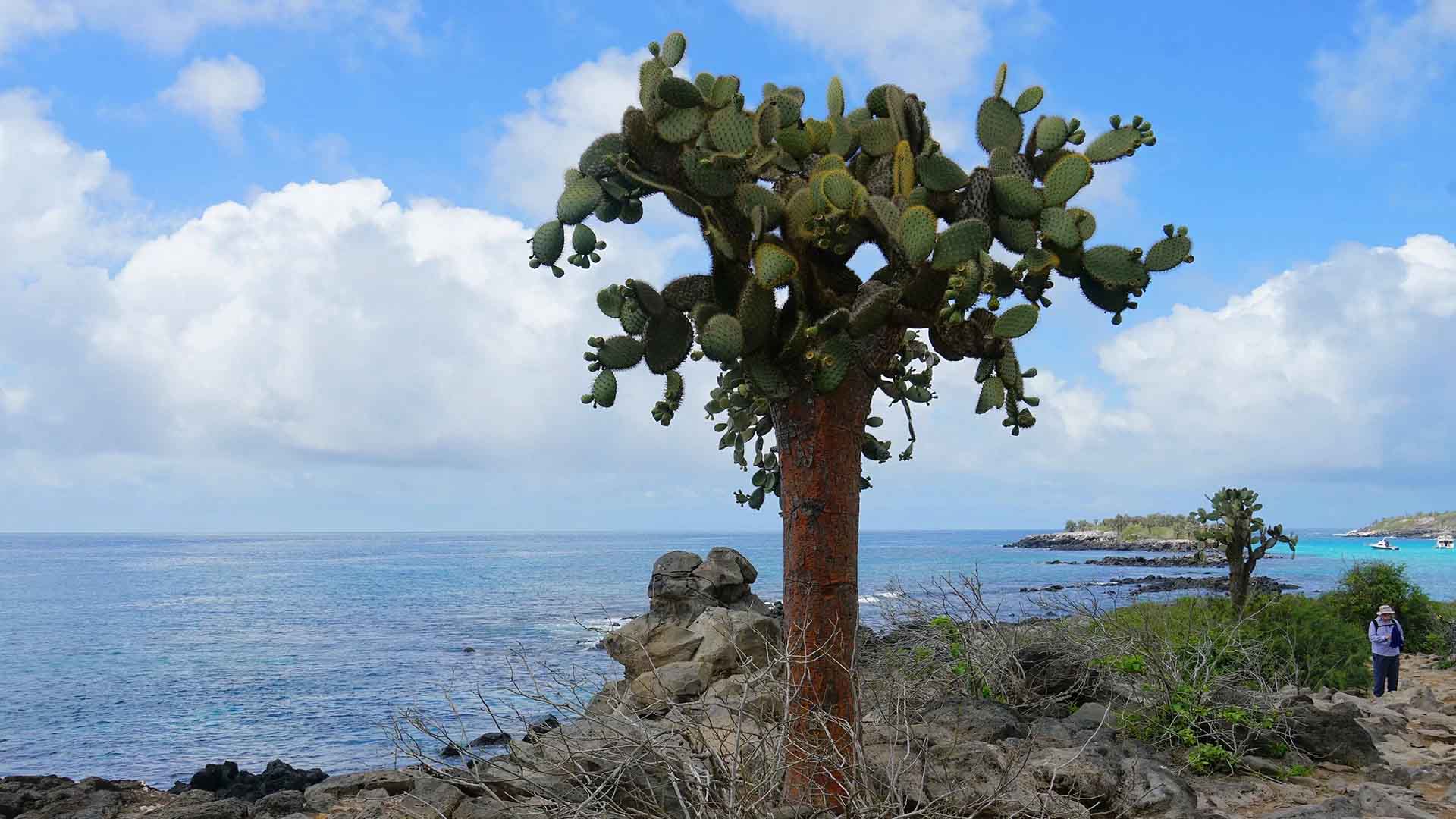
The Opuntia Cactus is found across various islands of the Galápagos and has evolved unique adaptations to thrive within its ecosystem. ©Lawrence Conaway
We are fascinated by the adaptability of Galapagos Cacti and their exquisite beauty. The presence of these cacti on the different islands reminds us of the need to protect the Galapagos biodiversity. All of these succulents are able to survive extreme conditions. They teach us valuable lessons about resilience and interconnectedness of life. We must protect this natural heritage and ensure that these species flourish in their habitats to the benefit of future generations.
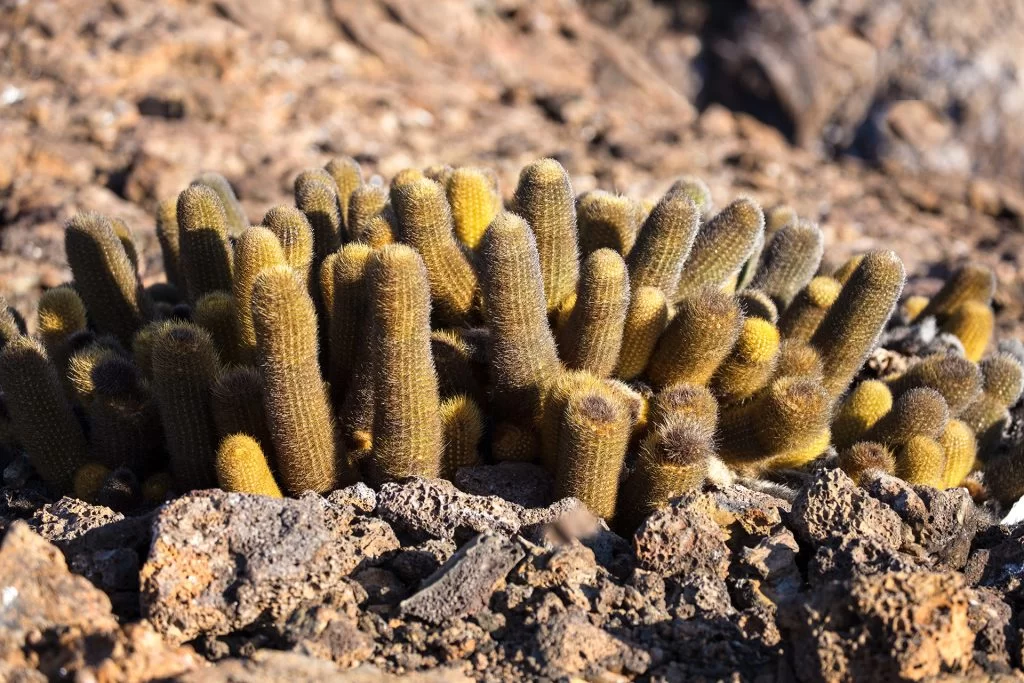
The Lava Cactus (Brachycereus nesioticus) is the only species in this genus, which is restricted to the Galápagos and It is one of the first species to colonize fresh lava flows. ©Sandra Hotrum
Youth Leadership and Conservation Inspired by Experiential Learning
Sebastian developed his educational program “Experiential processes for Adolescents & Youth in Galapagos Community” based on two educational initiatives to promote the care of Galapagos Islands.
The first initiative aimed to encourage community leadership in young people by encouraging them to analyze community issues and find solutions that align with United Nations Sustainable Development Goals. The second initiative aimed to use photography as a tool for conservation through workshops, photographic excursions, and educational activities, in collaboration with local scientists and park rangers.
Activities included workshops that focused on SDGs. They also included talks with local stakeholders and visits to agroecological farming operations. The program’s activities included experiential workshops focused on the SDGs, talks with local stakeholders, visits to agroecological farms, monitoring of emblematic species, and ecosystem restoration.
Dr. Jorge Carrion is our Director of Conservation and he commends Sebastian on his leadership in this project, which has motivated the Galapagos Youth to be more engaged with their environment. Jorge Carrion believes that young people such as Sebastian are essential allies for conservation. He is confident that Sebastian’s project can significantly foster community interest in caring for and improving the Galapagos Islands.

Over 60 youth received hands-on education and learned in an enjoyable manner how to protect their home, the Galápagos Islands © Sebastián Pilla / Galápagos Conservancy
Galapagos Sustainable Style Revolution: How one woman is leading the way
Diana, a Galapagos-based resident, has led a pioneering sustainable fashion project. She drew on her impressive 20 years’ experience in textiles. Her workshop, which is guided by the 3Rs – recycle, reuse and reduce – gives new life to discarded materials. It creates a variety of accessories and decorative items, from bags, cushions, bows, and headbands. The creative upcycling reduces carbon footprint and pollution by a significant amount.
The impact of the project has been extraordinary. Diana is a shining model of responsible and efficient use of natural resources. She has captured the attention of consumers who are committed to sustainability. The success of the initiative has also led to increased production and part-time employment, boosting economic growth and resilience for the Galapagos Community.
We are proud to support female entrepreneurs such as Diana, whose efforts promote a sustainable culture in the archipelago. Diana’s story is a testimony to the power of a bold vision backed up by proper support to transform an industry and contribute to an economically and environmentally sustainable future for our island.
[one_second]
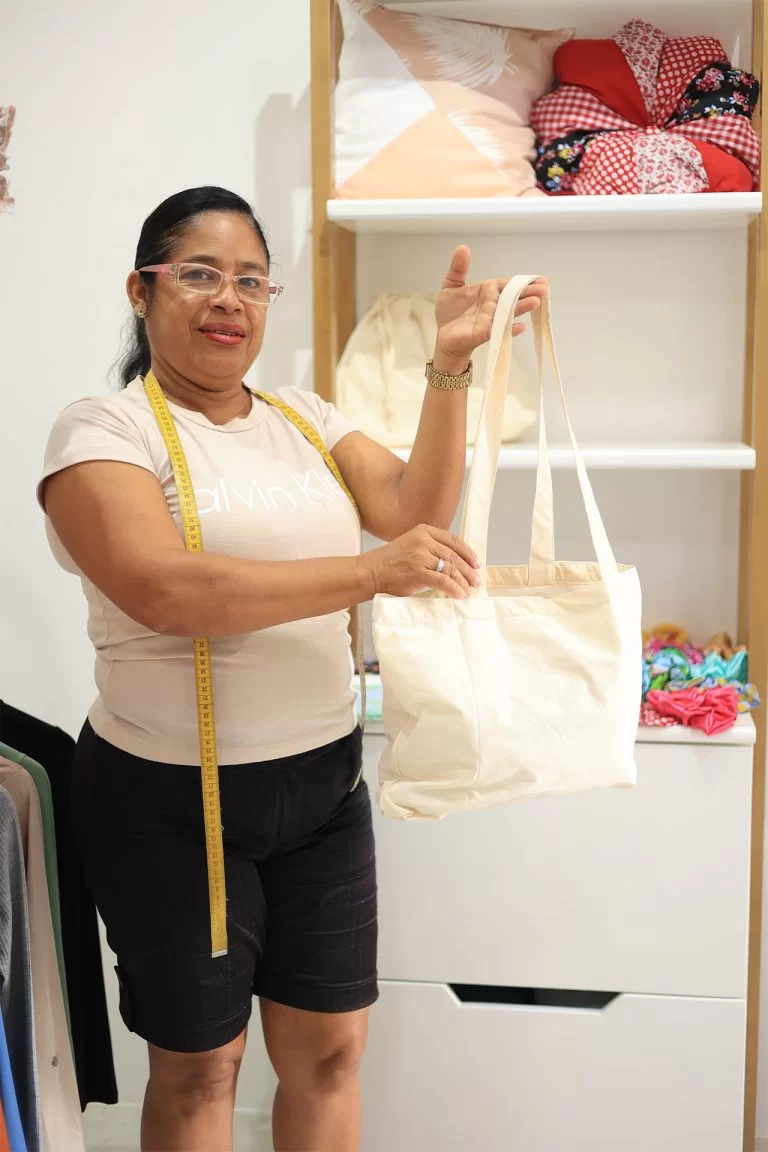
Diana’s eco-friendly approach shines as she crafts fabric bags from recyclable materials, advocating for reduced plastic bag usage. ©Galápagos Conservancy
[/one_second]
[one_second]

With creativity and sustainability, Diana crafts beautiful cushions from fabric scraps, showcasing the beauty of recycled materials. ©Galápagos Conservancy
[/one_second]
Galapagos Conservancy, in collaboration with the Galapagos National Park Directorate and to celebrate World Turtle Day on May 23rd, is working to protect and conserve Galapagos Giant Tortoises. Both organizations collaborate through the Initiative Galapagos to restore ecosystems and ensure the survival of these fascinating creatures.
The nonprofit American Tortoise Rescue established World Turtle Day in 2000 to promote global awareness of the importance and threats to turtles and tortoises, and to encourage conservation efforts. The IUCN Red List classifies the Galapagos Giant Tortoise as Endangered, Critically Endangered, or Critically Threatened due to a variety of factors.
Washington Tapia is the General Director of Galapagos Conservancy. He pointed out that historically, Galapagos giant tortoises were hunted for their oil and meat, resulting in a dramatic decrease in population. Their vulnerability has been further increased by habitat degradation, invasive species and illegal trafficking. Tapia said that it is important to take immediate measures to protect and preserve these species. This will ensure the maintenance of ecological integrity in the ecosystems where they live and promote greater awareness about their importance to ecosystems.
The Iniciativa Galapagos Program has made significant progress in conserving the Giant Tortoise by restoring the native ecosystems of islands and the Giant Tortoise. Some of the notable achievements are the protection of nesting areas and the optimization of captive breeding programs.
Galapagos Conservancy takes pride in focusing its conservation efforts to these majestic creatures across the Archipelago, and being part of one the most successful restoration program around the world. Iniciativa Galápagos shows how public-private collaboration can have a positive impact on the conservation of threatened species. Tapia said that “our commitment” is to protect and preserve these amazing reptiles every day.
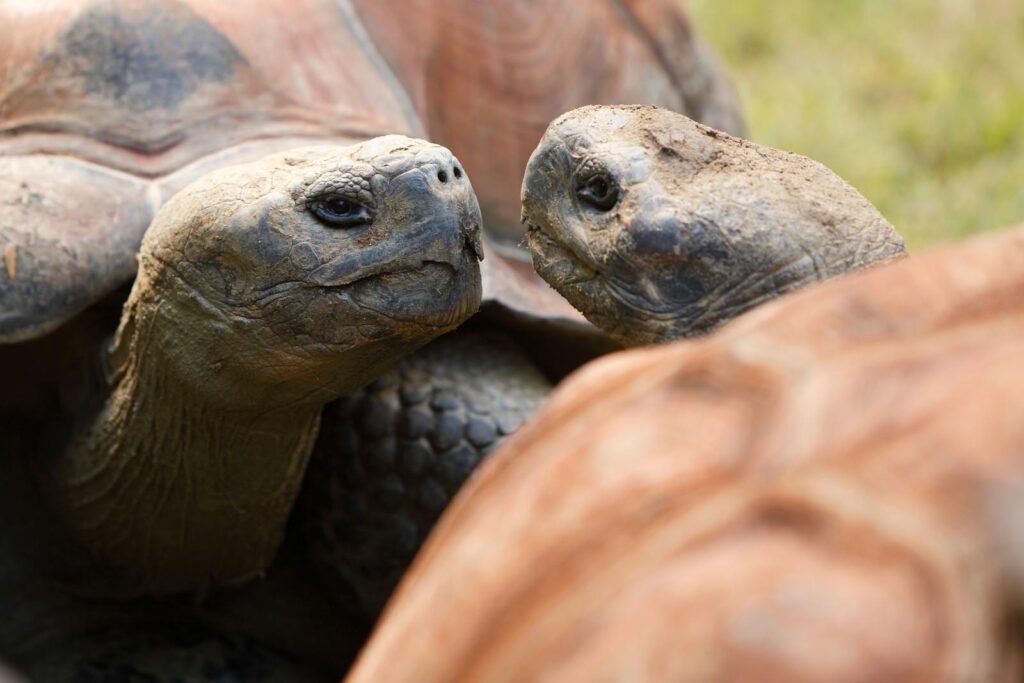
Maria Daza is a conservation educator who understands the Galapagos Islands as a living laboratory. She encourages the next generation to become environmentalists. Daza, who works at the Galapagos National Park Directorate, has spent decades promoting holistic development in children and environmental awareness. Daza was able to share with Santa Cruz Island Schools her passion for conservation thanks to the Galapagos Conservancy.
Daza’s environmental project included regular school visits where principals and teachers were educated on various environmental issues. These visits benefited 3,767 individuals, including teachers, students and staff. They learned about the negative effects of single-use bags, the benefits of biodegradable and compostable bags, and alternatives to plastic.
Daza also organized puppet shows, and distributed biodegradable and compostable bags to all participants. The bags will reduce plastic waste in the community by a significant amount. They naturally decompose into organic fertilizer after 180 days. Daza stresses the importance of eco-friendly bags, which are the best alternatives to single-use disposable plastics. They can be used to transport goods, package food and collect organic waste. This promotes sustainable practices while reducing environmental impact.
This initiative has been a success, as evidenced by the positive response from the local population and the impact it has had on the environment. Daza argues that education is not limited to the classroom and that it’s important to encourage students to embrace and learn about environmentally friendly alternatives. It is essential to learn how to reduce, re-use, and sort waste in order to build a sustainable future on the Galapagos Islands.
Daza’s unwavering commitment to environmental education and conservation has been inspiring. Galapagos Conservancy is proud to support initiatives that make a real difference in protecting this unique ecosystem. Together with locals such as Daza, we’re building a better future for the Galapagos Islands where education and conservation go hand-in-hand to preserve this incredible treasure.
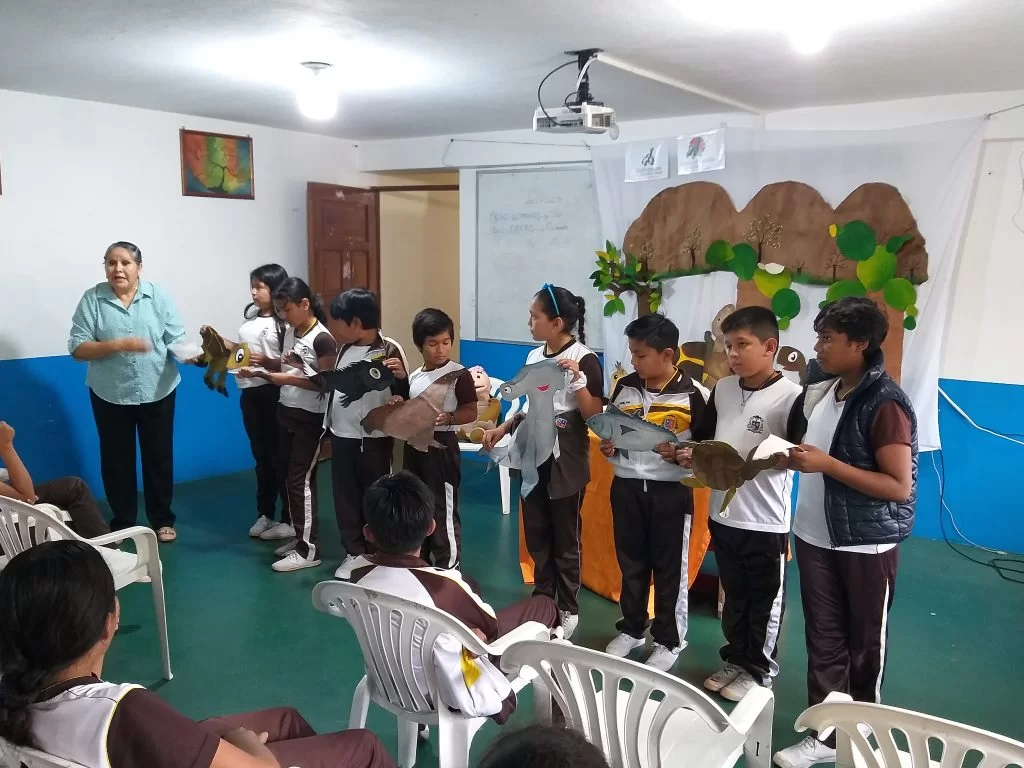
Students learning about the Galápagos species © GNPD